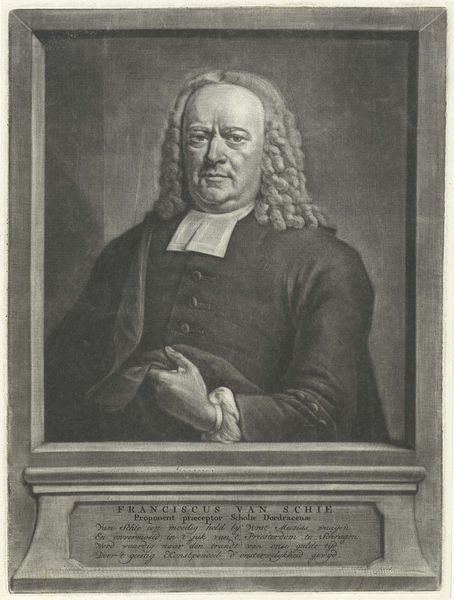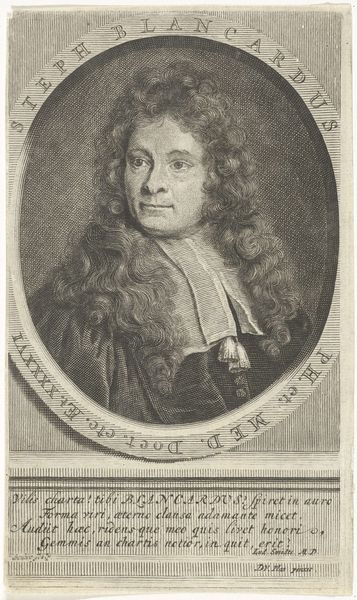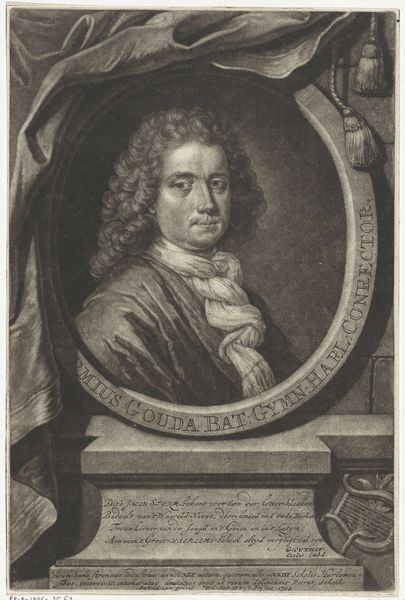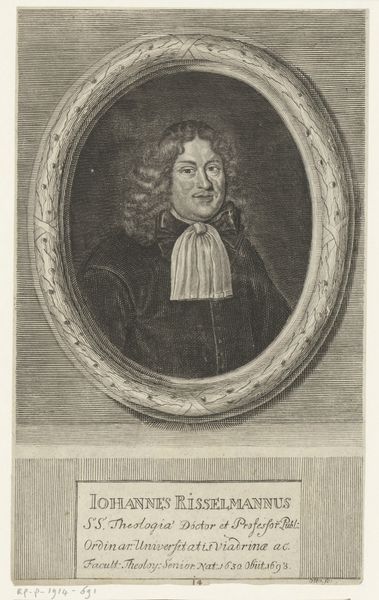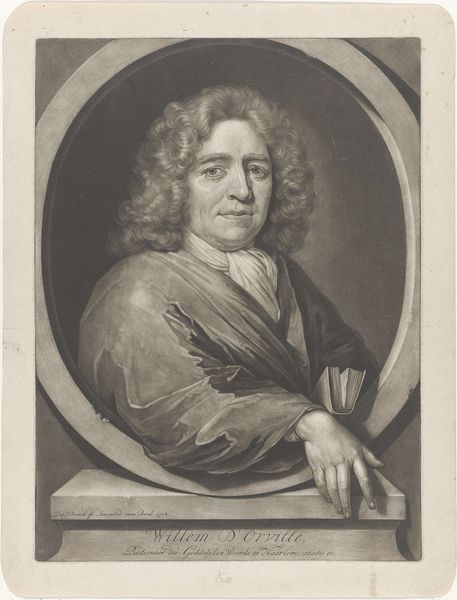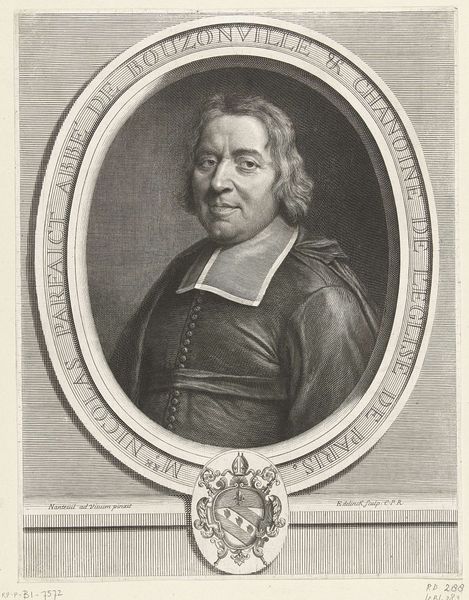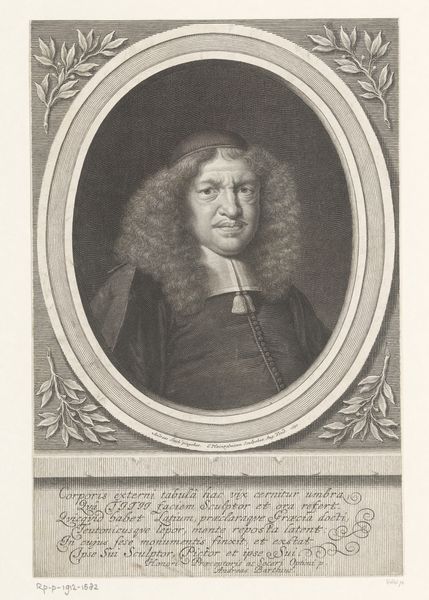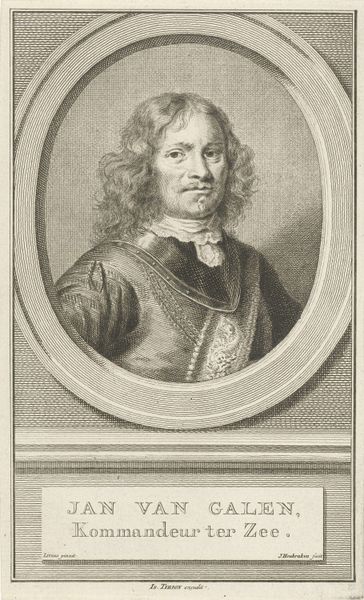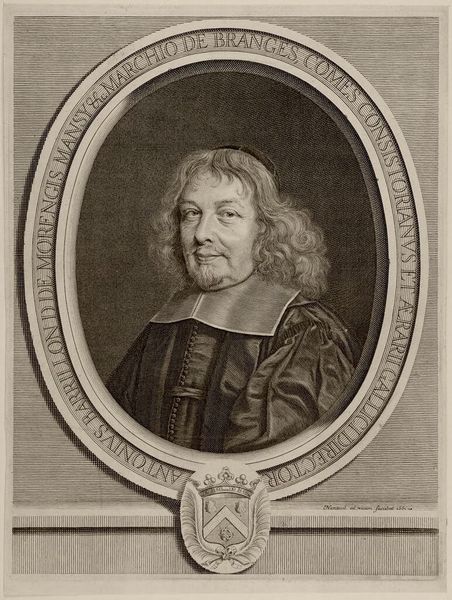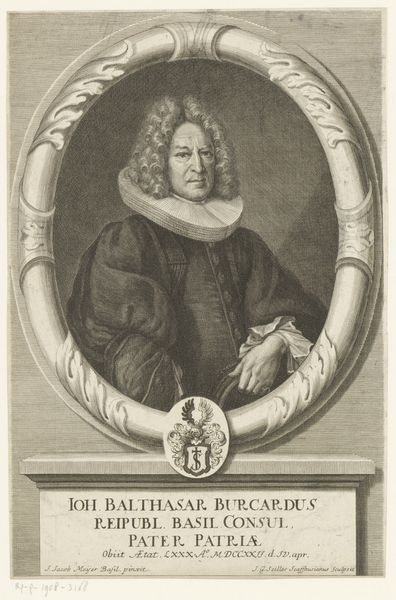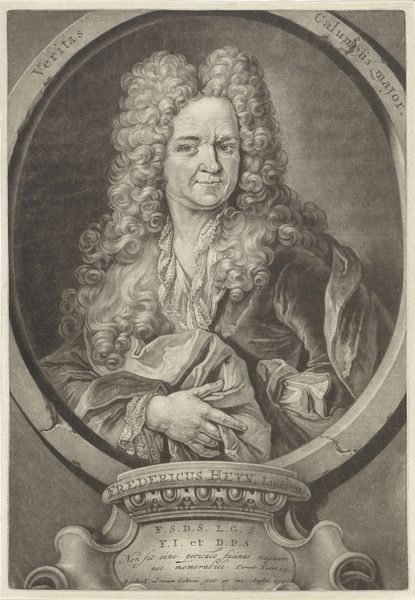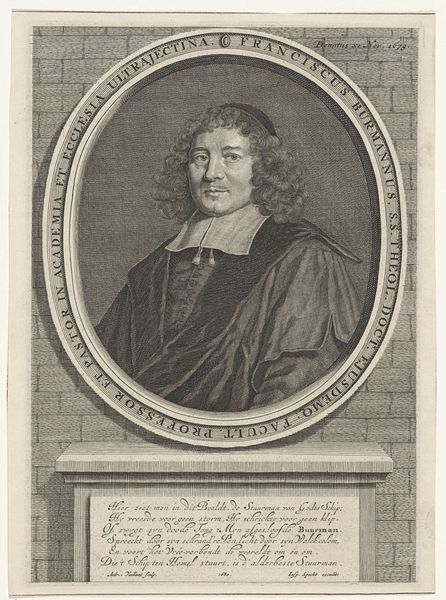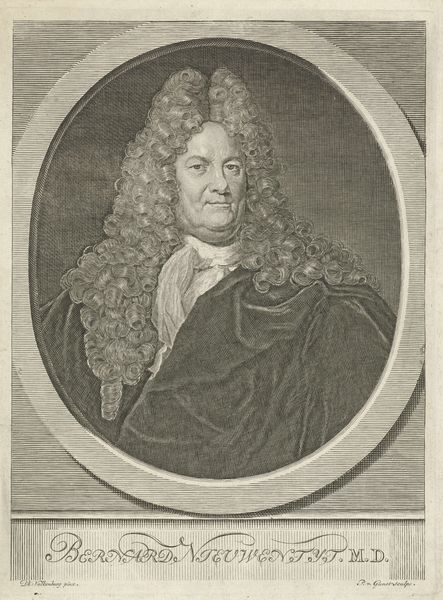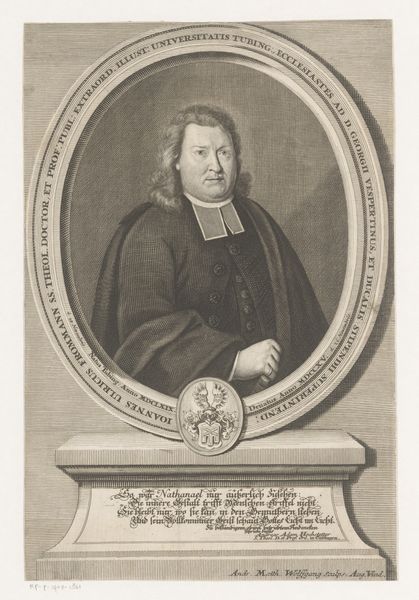
drawing, charcoal
#
portrait
#
drawing
#
baroque
#
dutch-golden-age
#
charcoal drawing
#
portrait drawing
#
charcoal
#
history-painting
#
charcoal
Dimensions: height 283 mm, width 193 mm
Copyright: Rijks Museum: Open Domain
Curator: Here we have Thomas van der Wilt’s “Portrait of the Preacher Josias van der Kapelle,” created in 1691. It's a charcoal drawing showcasing the artistry of the Dutch Golden Age. Editor: The first thing that strikes me is the framing, almost as if it's a bust on a plinth, giving it a sculptural quality even though it's a drawing. It's a somber mood. Curator: Indeed. Van der Wilt, though less celebrated than some of his contemporaries, was deeply embedded in the cultural landscape of the period. This portrait is a glimpse into the Dutch Reformed Church, a powerful force shaping moral and social life. Van der Kapelle would have been a well-respected figure in his community, so the imagery projects respect and tradition. Editor: Look at the exquisite use of chiaroscuro, the dramatic contrast between light and dark. The artist expertly models van der Kapelle’s face, using light to create form, and the deep shadows to suggest a certain gravity, maybe even internal conflict. It is Baroque certainly, but more constrained. Curator: It reflects the cultural climate of the time. These portraits were important for solidifying status. Notice how the oval frame within the rectangular structure serves to isolate and elevate van der Kapelle, symbolizing his distinction within the community. Editor: Yet there is a simplicity to the presentation. He’s not adorned in finery. The composition itself—the positioning of the hand, the slight turn of the head— draws us into the sitter’s space, even hints at the individual. Curator: The Dutch Golden Age portraits served to remind viewers of the sitter’s virtues and contribution to society. Van der Wilt was keenly aware of how portraits can convey authority and morality, subtly reinforcing the values of the church and state. The use of charcoal suggests it was created for private devotion. Editor: Looking at the man's eyes again. Is there perhaps a touch of melancholy captured there by Van der Wilt’s hand? A fleeting expression giving us access beyond the status and gravity you describe? Curator: Possibly, though one has to be careful projecting modern sentiments. Perhaps it's merely the artist capturing the gravity expected of a religious leader in a tumultuous time. Editor: An artwork like this invites us to see beyond the immediate and ponder upon not only an individual, but an era. Curator: And how images play a crucial role in defining and cementing collective memory.
Comments
No comments
Be the first to comment and join the conversation on the ultimate creative platform.
